Year-end gift: Drawing the future on a blank sheet of paper (Episode 7) - The rules of eye-catching sports and the opposition’s tips for preventing verbal abuse
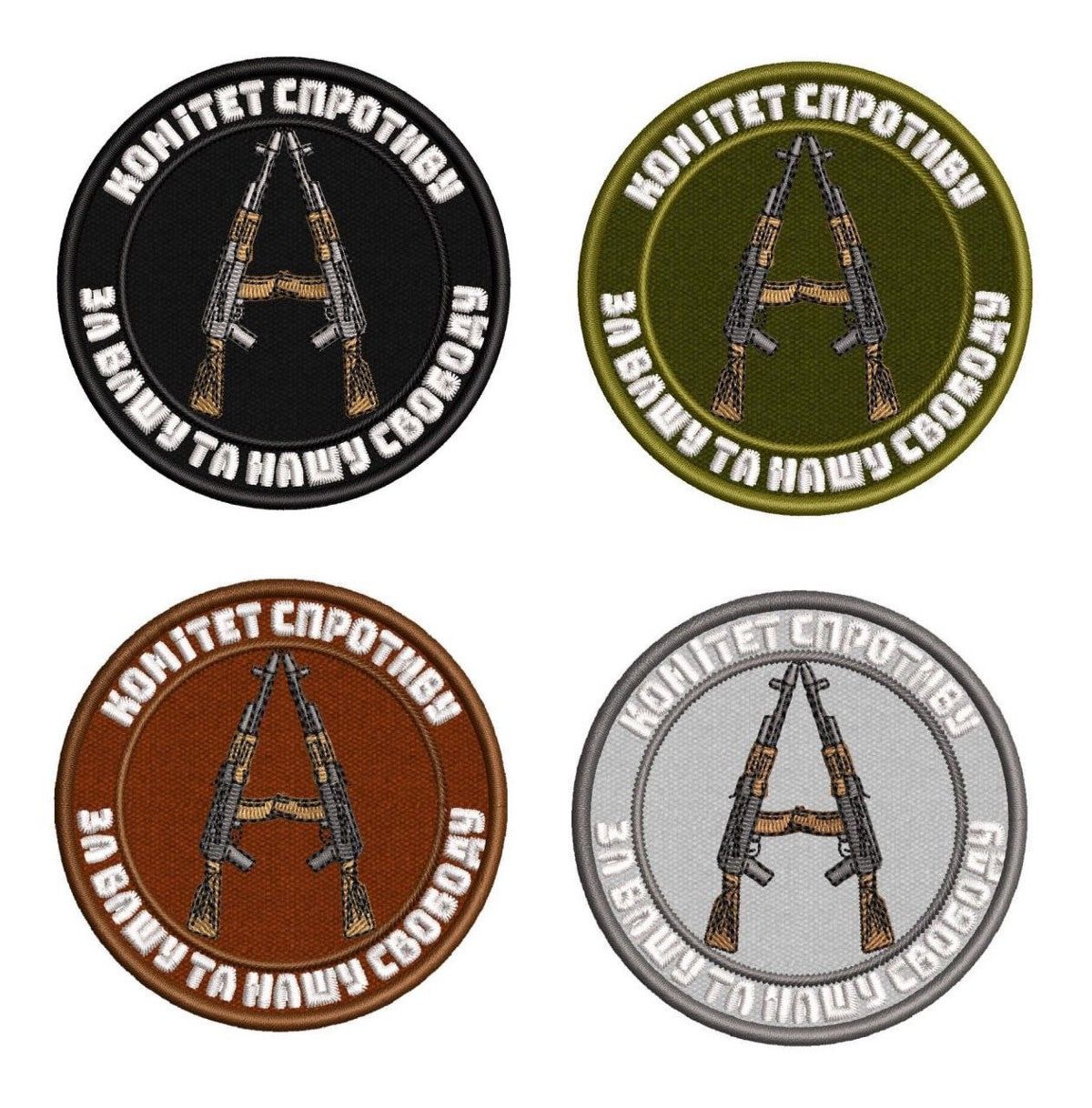
欢迎回来!这里是第6集。
If you missed it, you can see it below:
- " Year-End Rites: Drawing the Future on White Paper (Episode 1) - Are we "Iranian"? 》
- " Year-End Ceremony: Drawing the Future on White Paper (Episode 2) - The torch has been lit, what next? 》
- " Year-End Ceremony: Draw the Future on White Paper (Episode 3) - Compete for IQ with the rulers, not with the public "
- " Year-End Rites: Drawing the Future on a Blank Paper (Episode 4) — Yes, there is an uprising that is hard to suppress "
- " Year-End Gift: Drawing the Future on White Paper (Episode 5) - Smashing the Closed Loop "
- " Year-End Rite: Drawing the Future on White Paper (Episode 6) - Tolstoy or Zhang Xianzhong? No... 》

Q: Nowadays, Chinese media still have a largely spectatorial mentality towards protests in other countries. But just a few years ago, if you discussed protests in other countries, someone would jump out and say that you were "Xinwen Lianbo" ” (The last part of the news broadcast is always “Other countries are in chaos again / in dire straits”). This means that discussing the resistance of other countries in the Chinese-speaking community may not have traffic, and may even be dangerous and easily misunderstood. Therefore, it is rare that you analyze each country's resistance actions in such detail. Aren't you worried about being called a news network?
iyp : Not worried. There are no borders in our eyes. Whether it's the protests in Russia , the protests in Iran , India , Chile , or any other country, all of these events directly affect everyone -- and the protests spread from one country to another. Russian rebels have begun to use the actions of the Chinese rebels in Guangzhou to inspire their comrades; they say "our comrades in Iran and in China." In fact, protest waves can often travel across multiple countries at once, spreading rapidly.
But to achieve this goal, several prerequisites need to be met; when these conditions are lacking, it will easily become a news network, or it will be a waste.
These conditions are:
A) Mobilize a slew of independent media outlets to interpret protests around the world, showcasing the protesters and explaining why they are “just like us” and why there is no difference between us .
The so-called “diffusion” of protest has a better effect among those who see themselves in a similar “structural position” or who share a common identity. By contrast, diffusion between groups that perceive each other to be very different rarely occurs (as the sociologist Gemma Edwards has argued).
Othering is what Xinwen Network does.
Not only that, but racist/nationalist public opinion also plays a divisive role. For example, it is claimed that in European and American protests, protesters often take the initiative, while Asians can only stand up in an intolerable and passive way. This is not conducive to the spread of behavior. People in Iran or China did tolerate it for a long time and now they don't tolerate it anymore, it turns out there is no innate slave mentality.
B) "reframe" protesters' strategies and beliefs to fit local circumstances.
You can find a lot of common ground between people from different countries — but the beliefs or tactics of, say, Iranian and Russian comrades still need to be localized by Chinese protesters. This will take some work.
Iran and Russia are the latest experiences with protest under authoritarian regimes, so there is much to learn here. It's a proving ground for testing methods that might later work for your local area.
C) Take advantage of the general trend in other countries and carry out local mobilization.
Tactics need to be adapted not only in theory but also to local soils. In the same way, similar prerequisites need to be created.
The most noteworthy aspect of Operation White Paper is the cross-regional unity, which broke some of the stereotypes about Chinese civil resistance. When we frame it at an international level, it will help maximize its resources and energy.
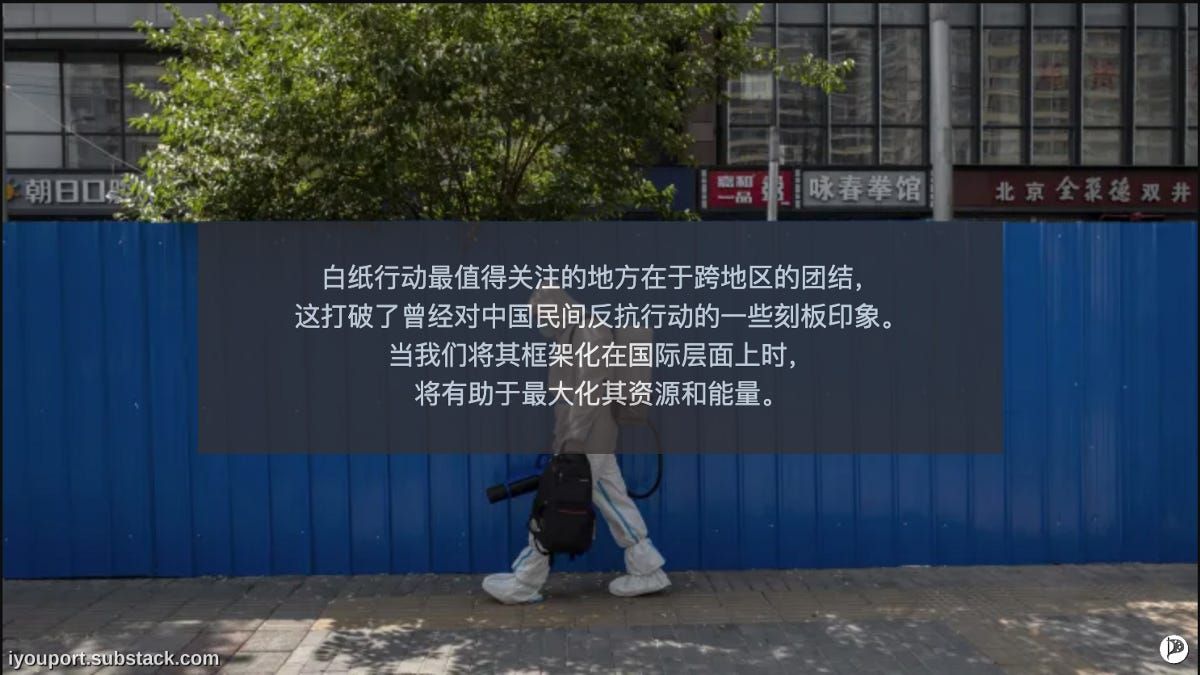
Q: I’m very lucky to have a blank slate. Such a simple tactic can quickly attract attention. Is it because there are too few large-scale protests by Chinese people? If so, you may not be so lucky next time. There seems to be a paradox. The more protests there are, the harder it is to attract people (commonly known as useless), and mobilization capabilities and effectiveness will decrease. How can I be more attractive? Are there any rules?
iyp : The blank paper is not too "lucky", but it is not the problem of the actors, but the lack of infrastructure.
This needs to reiterate what “attraction” is for a movement/action – it should mean that enough people will follow the signal to reach the correct “destination” that is in line with the strategic goals of the movement The / is often preset by the actor. This means that the movement itself needs to have its own narrative (including spokespersons), a platform that cannot be easily distorted and slandered, and a strategic goal with a large enough consensus. Without these infrastructures, not only does it lead to conflicts of opinion that derail the strategy (to a certain extent, as it has recently), but it can also be easily exploited by repressors and the media .
The white paper as a symbol is a great source of attention. As we all know, an entire industry has formed around the development of attention, with super-capitalists mass-producing this resource and affecting the entire world; small entrepreneurial businesses desperately trying to get their hands on it.
At this point, movements/uprisings/revolutions/resistance mobilizations, have the same truth.
The process of "production" can be roughly divided into three parts: attraction, guidance, and recycling.
Activism itself is one tool for attracting attention. In order to attract attention, actors send special signals into the information field to arouse people's curiosity - such signals are called "sources". The reason does not need to play a direct role. Its main quality is its eye-catching and "news value". Mr. Peng is a high-quality "source".
But this is just the beginning. Once attention is drawn to action, it must be "shifted" to the target object. For example, against war, against landfills, against the tyranny of lockdown …
In other words, the attention given to the target must be "tied up" before it slips away and then "converted" into other types of resources and influence.
Of course, the repressive authorities will work hard to eliminate its influence, such as through content censorship and increased deployment to maintain stability. They only have these cards, and all these tactics are likely to strengthen the "reason" rather than weaken it.
The key is rapid deployment of activists to achieve timely conversion.
Attracting, guiding, and recycling is a complete process, and each one is indispensable.
Q: I saw someone saying that holding a white paper is a fresh way to earn traffic. What do you think?
iyp : There are also some Russian activists who believe that when a fire destroyed a recruiting office, it was a "real" action, and when a fire created an image for the media, it was just a "fake" and A "meaningless" action is just a gesture. Posture can only earn traffic and be used by the media to take photos, but it has no practical effect.
In fact, this is a misunderstanding. These media photos may not have a direct role in strategy, but they work in different mechanisms. That is, attention.
Attention is never a useless thing: it is attention that gives a movement donations, new members, moral support, weapons, audiences - and finally, influence over the authorities. Only by grabbing their attention can you get your campaign's message across to people.
The amount of attention captured determines other effects of the action – such as deterrence or “contagion” (the ability of a protest action to stimulate imitation by the audience, thereby turning one action into a series of actions). Or the expansion of uncertainty will cause a chain reaction and shake the ruling order.
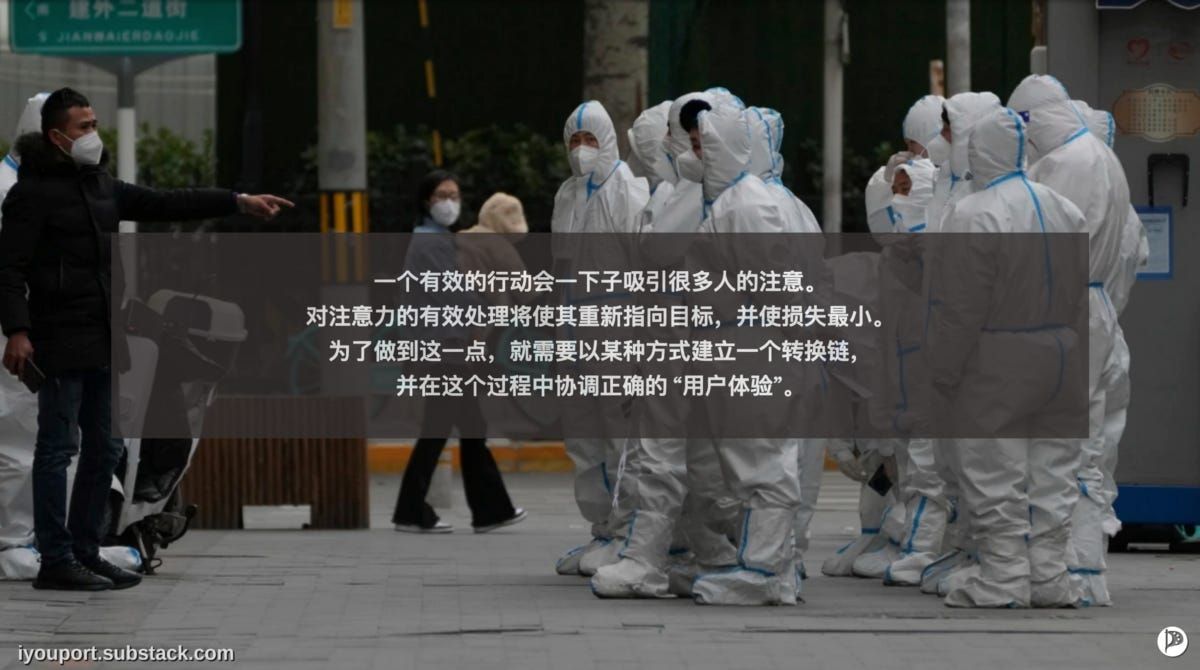
Q: Is it because the disaster of clearing out the blank paper attracts people so quickly?
iyp : The reason why blank paper can be used is that it contradicts the audience’s common stereotype of Chinese society. Here it is “against the norm” and highlights the absurdity of being “forbidden”.
What will grab people's attention? ——Conflictful, dazzling, unconventional, forbidden, highly recognizable, weird...all included. The more dull and staid a society is on a daily basis, and the more things are forbidden, the easier it is to attract public attention.
For activists, find a compelling list of “whys” to weigh trade-offs against. It is recommended to read more about various news events and try to explore the rules of news attraction.
But it’s important to note: when a method proves effective, it will be imitated quickly, regardless of the degree of weirdness (such as the weird walk that counters gait recognition ); you will see more and more people doing it Something wacky because it's cool and attention-grabbing. Then it quickly becomes routine; the next time you need to attract people, you may have to resort to more extreme methods.
This is also something you need to pay attention to when using white paper. From now on, Chinese society has become more radical , and finding the "source" of attraction may not be so simple next time.
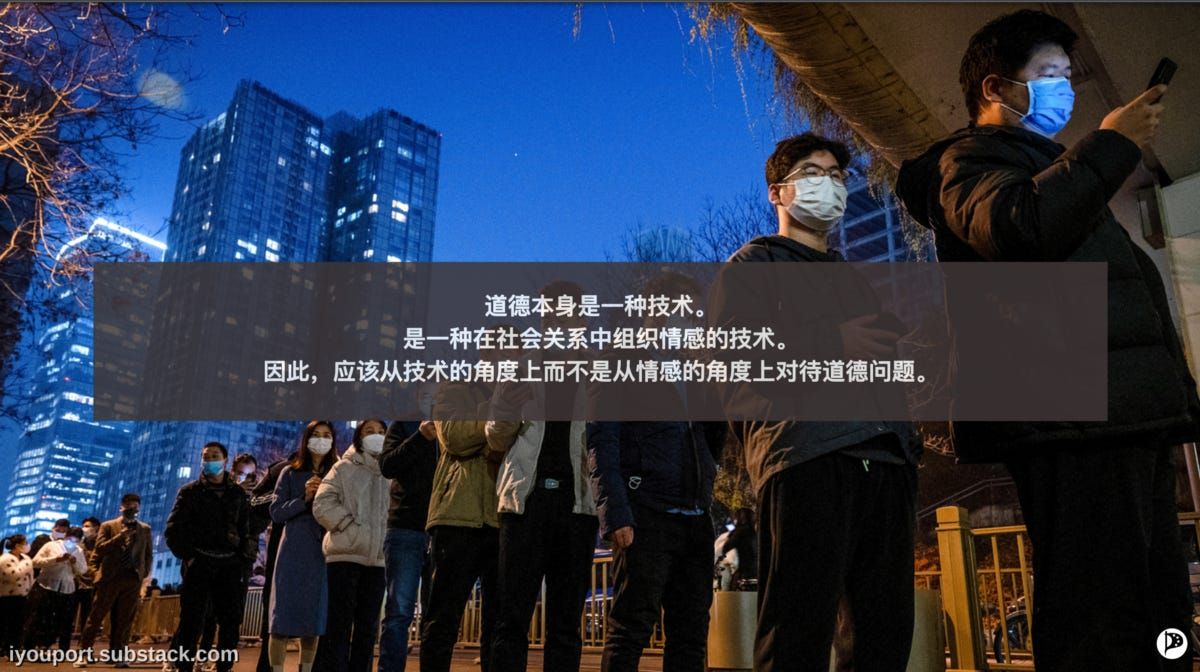
Q: After "attracting", what does "guiding" mean?
iyp : For the sake of imagination, you can think of it as UX/UI, but in real life. That is to think of an action or an entire movement as a single imaginary website.
After choosing an attractive "why", you need to turn your attention from it to the final "website". This is guidance.
Just like using links on the internet. Links are channels of attention. In real life it is the meaning in language (signifier and signified, denotation and connotation). Semiotic UI.
For example: if a website QR code is printed on a free coffee cup, some of the people who see the QR code will enter your website to learn about your content. You’ve directed your audience’s attention.
Another example: Imagine a scene where the sky is filled with balloons, each with a special symbol painted on it. No QR code, no text, no instructions, no one knows what that symbol means. But the symbol is remembered and associated with a specific "origin." When this symbol is encountered again in a different situation, it will easily gain additional attention. Because awareness has increased.
You can turn attention into action by being specific about what needs to be done and when; turn attention into persuasion by providing content with the right message, and so on.
Goals do not necessarily have to be content or specific actions. By directing public attention to certain issues ("realizing" them), widespread impact can be achieved. Coverage of some issues can divide the public, while others can spark mass protests .
An effective action will attract the attention of many people at once. Efficient processing of attention will redirect it toward the goal with minimal loss. In order to do this, it is necessary to somehow establish a conversion chain and orchestrate the correct "user experience" along the way.
For example, from Sitong Bridge to White Paper to anti-tyranny to anti-border system , this is a transformation chain; if Mr. Peng understands this transformation, his losses should be minimized (theoretically), and self-sacrifice may not be necessary for the price.
A few things to note:
1. Every "switch" will lose part of the attention, so the chain should not be too long. Generally speaking, the limit is to convert twice, and you must transition to the main information after two times .
2. You should be able to draw the links at the beginning of the plan so that you know what to do. But there is no need to be too precise, and the nodes of the transformation do not have to be hierarchical or sequential. They can be structured in different ways (in a way that is not easy to guess) depending on the specific task .
3. During the process of setting up the transfer, you only need to be careful not to "dislocate" it. Remember, a tight link to the "source" is not easily dislocated, and there is minimal loss of focus during the transition. Logically clear links are not easily dislocated, which means they need to be accompanied by strong arguments in a timely manner .
4. Practice is required. Don't let the person who set up the link participate in the exercise. Invite trusted friends who know nothing about your idea to try out the link and you will find out whether it is appropriate (observe how the attention is distributed among the nodes and whether it matches the close to the designer’s expectations).
5. Even if you are satisfied with the results of the exercise, it is recommended to cut the intermediate steps in half . Since you'll never run an exercise with dozens or millions of people, this number should be the audience size you're aiming for, where attention is lost with each additional conversion step.
6. Transition nodes do not have to be mechanical; instead, they are likely to be organic. For example, an intermediary node could be a "digital ecosystem" - a forum and/or public network around which a community emerges. Ideally, you could even create a self-sustaining process with an attention-building cycle—community expansion.
7. Consider the media environment. Especially the Issue Attention Cycle model.
I thought about whether I should give examples to introduce this method, and finally decided not to give any examples. Because even a very implicit description will do more harm than good once it is described. Will cause your opponent to benefit more. Therefore, it is recommended that you think for yourself and only communicate with team members who are directly involved in the operation.
In addition, it is important to note that if a method does not work well in situation A, don’t give up immediately; it may be very attractive in situation B. Different audiences may be interested in the same information on different occasions.
It’s also important to note that appeal to big media and appeal to the public may not be the same thing—the more revolutionary your plan of action is, the more obvious the inconsistency will be . At some point the media may be more "useful", but in most cases it is the public's attention that has the highest value, especially the group your campaign is targeting.

Q: I have clearly felt the importance of unity in action. But at the same time, I also clearly realized that there was a particular lack of tacit understanding and basic consensus among everyone. There is usually too little discussion, too much time spent looking down on others, making sarcastic remarks, and almost no effective communication on solutions. Many people think that quarreling occurs when politics is discussed. For the sake of a harmonious atmosphere, it has become the default etiquette not to talk about serious matters. The closer the relationship, the more inconvenient it is to talk about serious political topics. It is also impossible to chat with strangers online. out of anything of value. To a certain extent, there is also a competitive relationship between dissenters. They either refuse to comment to avoid quarrels, or they comment blindly just to quarrel. The value of communication is low. The moral rules established in some circles were originally designed to avoid quarrels, but the results were worse than nothing. I remember you wrote that "dissent does not understand love". To "love" on this issue is to be polite, which means that in-depth communication cannot be carried out. Is this a contradiction?
iyp : Dissident communities should have their own rituals, rather than following the traditional rituals regulated by rulers and characterized by hierarchy and dominance.
Morality itself is a technology. It is a technique for organizing emotions in social relationships. Therefore, ethical issues should be approached from a technical rather than an emotional perspective.
Moral agreements are not useless; they provide important social mechanisms: networks of trust, reliability of cooperative transactions, and limits on destructive and abnormal behavior.
Traditional politeness is the implementation of a morality based on two principles. To avoid causing conflict, unpleasant facts must be withheld (from strangers) or distorted (from people you sympathize with). For example: You don't like your friend's painting, but in order not to offend him, you say you like it.
Many of us have done this. So what's wrong with this? Well, there is.
Politeness is the rule of conflict management. Traditional politeness is not designed to resolve conflict but to simply push it away. But avoiding conflict doesn’t help: avoidance only leads to an expansion of tensions and conflict, and a shrinking of the culture that handles it. The negative consequences of this attitude are akin to psychological displacement.
Distorting information can be even worse than silence. We all make decisions based on information received from the outside; if we do not understand the actual information, we cannot make good decisions, which reduces the quality of management and prevents people (or organizations) from achieving their goals. A single "white lie" may be relatively harmless, but when applied in large numbers, the distorting effect is multiplied.
In a society based on self-organization, informal rules come first. The opposite is true in a highly hierarchical society. To restore society's ability to self-organize, it is necessary to activate rules of etiquette that promote cooperation and resolve conflicts.
The inauguration of new liturgies by dissident communities in opposition to traditional liturgies was an important direct action.
The starting point of the new etiquette should be: feedback is an important resource; providing feedback is to help; refusing feedback is a harm, or at least refusing to help.
The first principle of the new etiquette is to provide feedback to others.
The second principle of the new etiquette is: If someone asks you to remain silent, you can remain silent. Because everyone is entitled to personal boundaries. Even if he/she chooses to behave unconstructively.
But people should not distort information. Distorting information is a weapon; a weapon is not meant to be used against one's own people or neutrals. No matter how pleasant a lie is, it is still destructive.
New etiquette recommends reporting bugs and shortcomings in a neutral manner. In traditional etiquette, criticism is used to "punish", lowering the status of others and improving one's own status. Therefore, your intentions may be misunderstood and counterattacked. Position-based arguments impede the transfer of information on technical issues. In fact, you can change this situation by changing your words, such as exposing yourself and showing your weaknesses before criticizing others: "I'm not much better, I will make mistakes, maybe even more than you."
Punishment with criticism is usually intended to exaggerate faults and negative points of view. Emotional stress is invested in the information. This should not be done in any way. Criticism should be constructive and offered in an equally helpful manner to attract dialogue.
Don’t forget that traditional etiquette teaches people neurotic reactions. Even smart people react like neurotics in this because they have been taught to do so. With the new etiquette, it is important to demonstrate the possibilities of different attitudes, leading to different role models. In the new tribe, status is enhanced not by those who try to pretend to be "always right," but by those who readily admit their mistakes and correct their behavior. Providing feedback to others is encouraged .
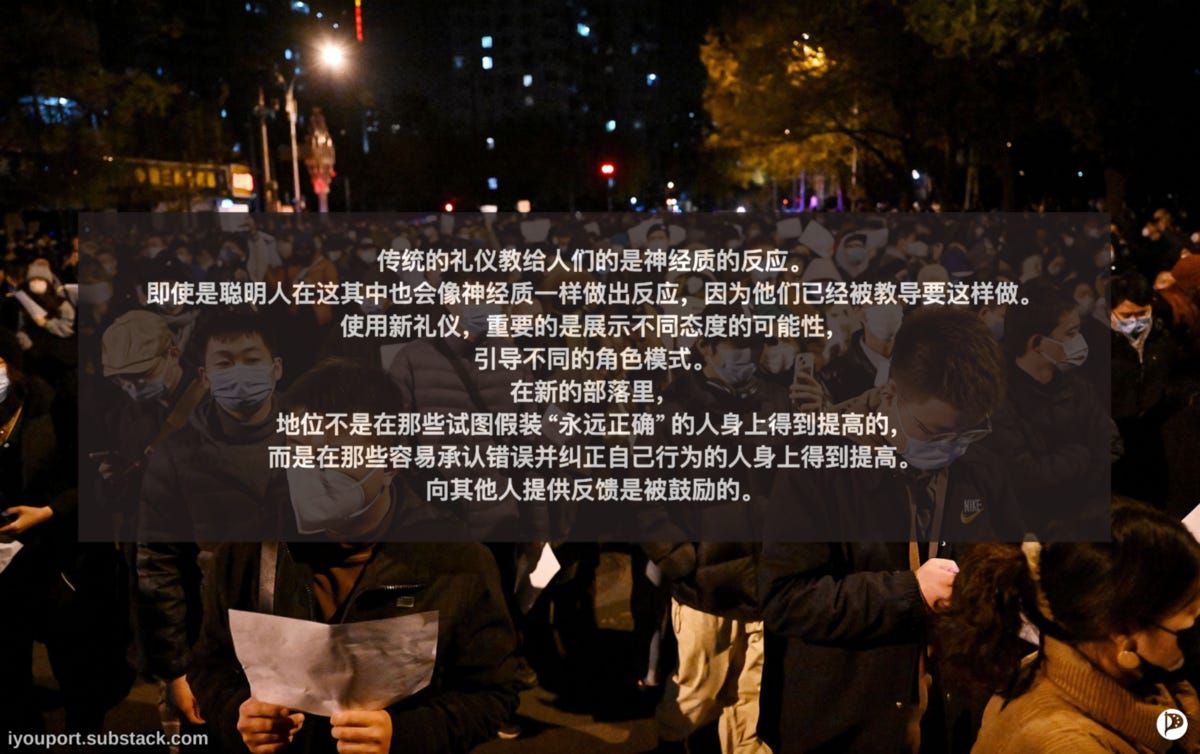
Unsafe “safe spaces”
Traditional etiquette is always trying to find some kind of "safe space", implicitly or even explicitly stipulating which topics cannot be said in certain situations (this kind of regulations has also entered social media and online forums to a certain extent). The logic of safe spaces shows how traditional etiquette can become trapped in a destructive cycle of positive feedback.
The more you avoid hurtful words, the more they hurt you. And the reverse is also true: experience with hurtful language will teach you to despise language. True free communication means diversity; safe spaces are a vicious cycle in which the realm of what is “safe” and permissible is ever shrinking.
Escape as a principle reinforces neuroticism towards language, leading to censorship and self-censorship, as well as justification for physical violence against language. It was the prototype of a totalitarian system that destroyed society's ability to exchange useful information and organize itself.
Free communication means that participants are able to transmit and receive all possible information, including so-called " hate speech ." The broader the scope of permitted speech , the less chance there is of information important to understanding the situation being censored. This makes the community more adaptable and resilient in its management—not just in terms of “uncomfortable topics,” but in general. For example, if an anti-racism project introduces censorship of racist speech, it will become increasingly vulnerable over time. The more widespread censorship is, the more often important signals of understanding enter “forbidden” territory. If an anti-racist program allows racist rhetoric to exist, it becomes more adaptive, resilient, and ultimately more effective.
Avoiding stress increases the vulnerability of the structure. Small pressures gradually expand the range of possibilities. Of course, it's important not to make the transition to a radical environment too abruptly—the more gradual it is, the easier it is to adapt. Additionally, it is important to keep the indirect effects of stress small.
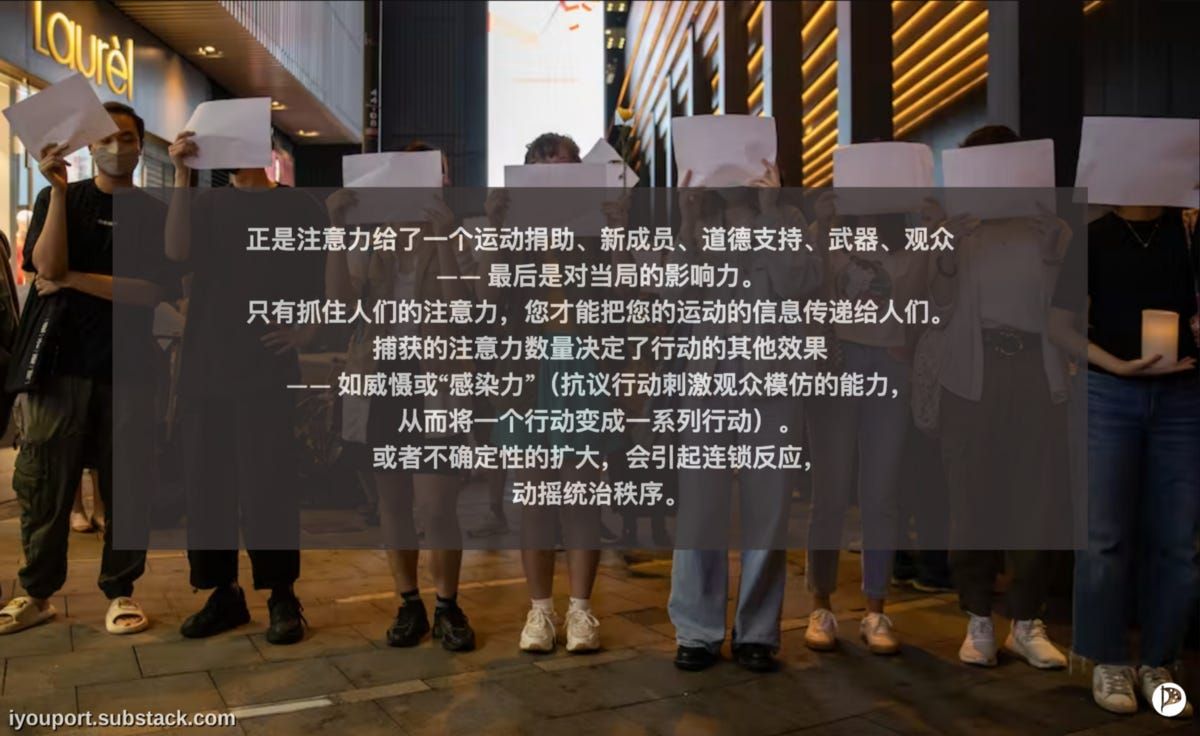
Stop using your identity to speak your mind
Cooperative communication is possible without competition.
In a community, a person always has an informal status. Status determines how he or she is treated by those around him or her. How easy it is for them to meet, what resources they share, and how well they are heard. Therefore, there is likely to be conflict over status issues. Status depends on how one's actions, gestures, and words are judged by others.
Collaborative dialogue is when you try to convey useful information about how the reality around you works. Competitive dialogue is when you try to convince your audience that you have a high status and someone else has a low status. It’s about gaining a higher status in the hierarchy. Competitive rhetoric is often disguised as cooperative rhetoric, otherwise no one would want to hear it. The vast majority of arguments on the Internet are competitive conversations, and as such they rarely make sense.
Furthermore, high status in old ideas meant that one should not show weaknesses or mistakes. A mistake is a reason for others to attack and test your position of strength. Mistakes are followed by ritual ridicule and downfall. Therefore, the main purpose of status communication is to hide the mistakes you may make at all costs. The purpose of "New Etiquette" is the opposite here, it values the ability to quickly detect one's own mistakes.
The "new etiquette" arises from the logic of cooperative communication: all its characteristics are simply an extension of the idea that it is primarily about conveying and receiving useful information about the world around us. From the perspective of the new etiquette, status communication is noise that interferes with the transmission of signals. A good way to check if you are trying to improve your status is to intentionally put your status at risk. Where accuracy matters, self-irony and openness are vital existential issues.
The third principle of the new etiquette: discover and communicate your mistakes to your interlocutor faster than others in order to gain an advantage in the conversation.
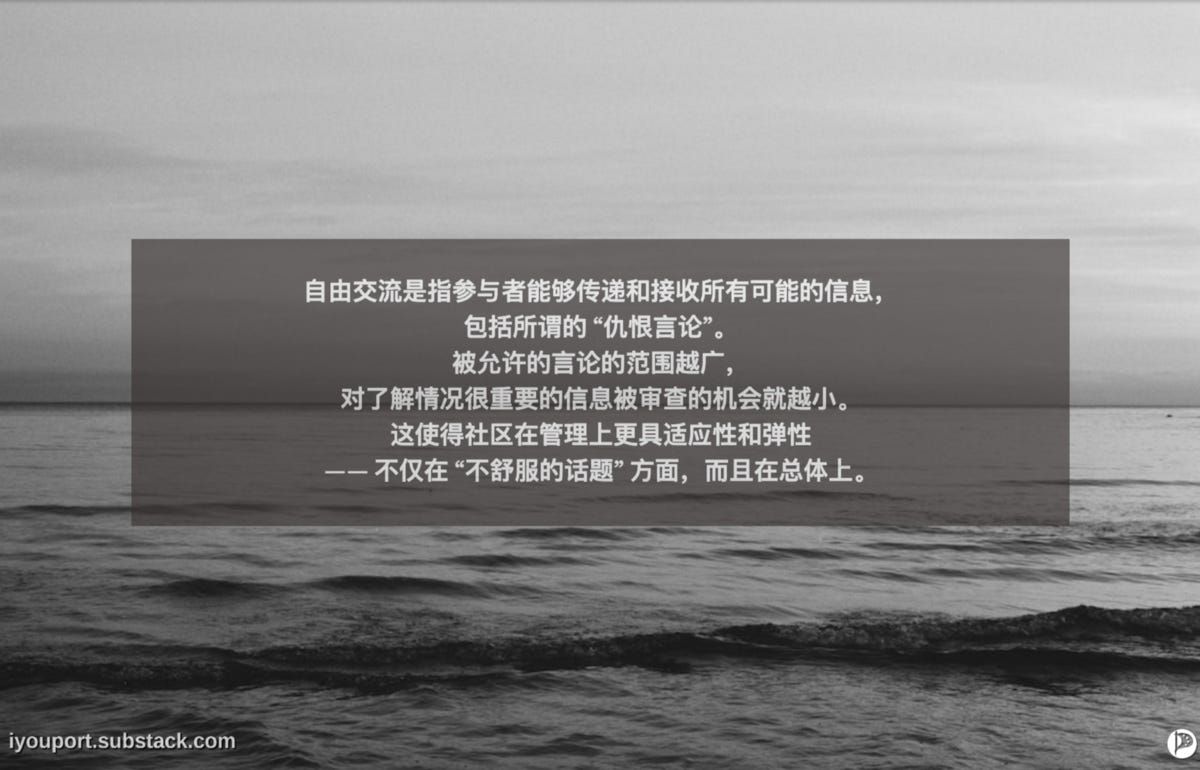
No feedback, no cooperation
No one can become perfect alone. To do this, mistakes must be corrected promptly. This is how important feedback is to all of us.
If a person is deprived of feedback, his behavior will gradually begin to "worse"—without counterforce, he will not know where to limit himself. Then he simply forgot to do it. This is what people often say: "Power corrupts people." Spoiled children, prison guards and elderly tyrants all share the same vices.
The same goes for groups and organizations: governments can only moderate their practices if they are under constant pressure from grassroots resistance. However, the government is a special group that exists to suppress feedback. The more powerful a government becomes, the less likely it is to view society’s feedback as a useful resource and more likely to view it as a crime and an insult. One of the functions of protest is that it brings people back to reality.
Without feedback from others, people lose the ability to cooperate and start acting according to the rules of the hierarchy.

Real politics is not about “famous people” on TV. But our ordinary daily life. This is where power comes into play. It is also the starting point of the revolution.
Start with a conversation. Restart the conversation with new etiquette.
New liturgy can serve as an insufficient but necessary condition for victory. It is the lubricant that enables us to understand each other, organize ourselves and resolve conflicts.

Q: You said last time that the radicalization level of the entire society will increase after the blank slate. This prediction is accurate. Sure enough. Pharmaceutical factory uprisings, overturned police cars, and fireworks protests happened one after another, which was almost unimaginable a year ago. Very exciting. The epidemic prevention disaster in the past three years has indeed changed a lot of things. Regarding the future, some people have realized the possibility of change, and there are different opinions, but most of these ideas are at the level of changing dynasties. Want to hear what anarchists think.
iyp : It’s time to discuss the future.
Before that, we need to tell some about the evolution rules of social systems...
📱 Preview of the next episode’s topics:
On the evolution of social systems and the world we want
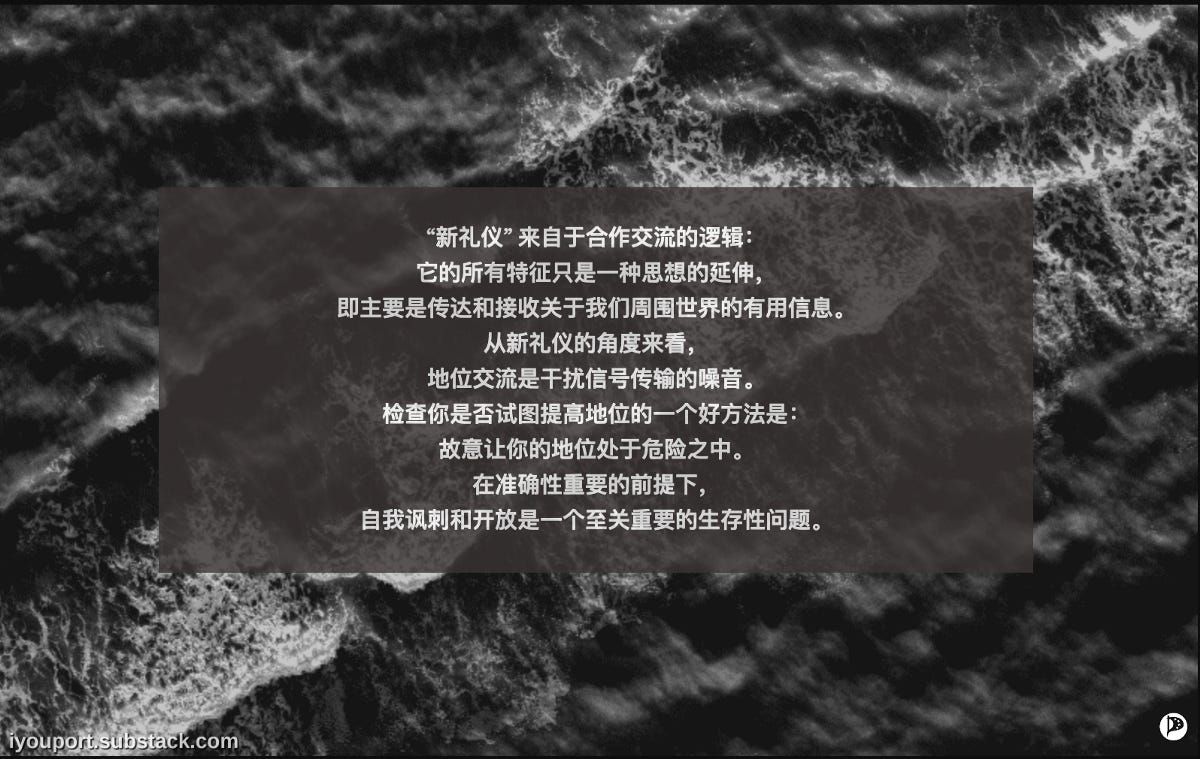
🏴️
——To be continued——
Like my work? Don't forget to support and clap, let me know that you are with me on the road of creation. Keep this enthusiasm together!

- Author
- More